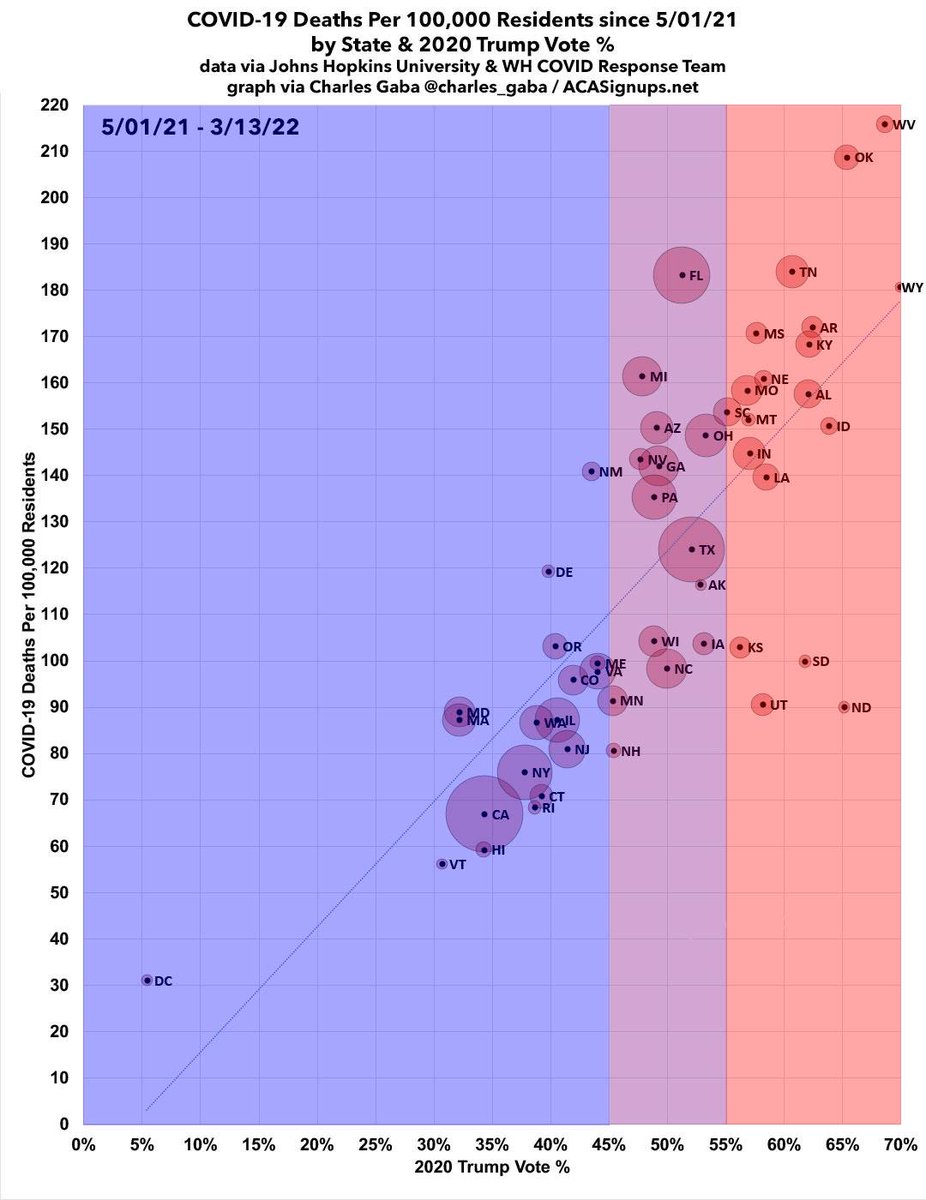
Of all the graphs & charts I've done over the past couple of years, this one includes the single eeriest coincidental data point. 

(By “coincidental” I don’t mean the overall pattern, I mean the fact that the crossover happened on that EXACT date as opposed to a week or two earlier or later.)
The crossover date does shift around a bit if you use the reddest/bluest 20% or 30%, but at 10%, which is what I’ve been using in a lot of my work, it’s right on the nose.
For those wondering, on 1/20/21, the official cumulative COVID death rate in both the reddest and bluest tenths of the U.S. was right around 138.4 per 100K residents (roughly 45,800 apiece).
And yes, the exact date itself is a coincidence—the narrowing trend clearly started around mid-July 2020 as the blue urban centers had gotten things under control while the red rural areas weren’t doing much of anything and Trump was holding his massive superspreader rallies.
NOTE: This is kind of blowing up; I'll be posting a blog entry about it in a little bit with full sources/methodology etc...
📣 BLOG POST VERSION, including sources, methodology & some bonus graphs:
acasignups.net/22/03/16/redbl…
acasignups.net/22/03/16/redbl…
It's also worth noting just how wide the urban/rural divide is politically: There's as many people living in the 63 bluest counties of the U.S. as there are in the 1,341 reddest counties.
UPDATE: As noted upthread, the Inauguration Day timing is indeed just a weird coincidence; if you use the reddest/bluest 20% the "crossover" date is 3 weeks later, and if you use the reddest/bluest 30% the lines cross 2 months *earlier*, in mid-November:
acasignups.net/22/03/17/redbl…
acasignups.net/22/03/17/redbl…
• • •
Missing some Tweet in this thread? You can try to
force a refresh





